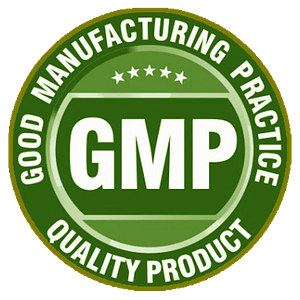Crafting a Compelling Brand Story: The Key to Building Emotional Connections
Every successful brand has a story to tell. Crafting a compelling brand story is essential for building emotional connections with your audience. A well-crafted brand story engages customers on a deeper level, creates a sense of purpose, and establishes a memorable identity. Here’s why a compelling brand story is the key to building emotional connections:
- Relatability: A brand story that resonates with your target audience’s values, aspirations, or challenges creates an instant connection. When customers see themselves reflected in your brand story, they feel understood and more inclined to engage with your brand.
- Authenticity: Authenticity is crucial in crafting a compelling brand story. Your story should reflect your brand’s values, vision, and mission honestly and transparently. Authenticity builds trust, and when customers trust your brand, they are more likely to develop a strong emotional connection.
- Emotional Appeal: A well-crafted brand story appeals to the emotions of your audience. It evokes feelings such as joy, nostalgia, empathy, or inspiration. By tapping into these emotions, you create a memorable and meaningful experience for your customers, fostering a deeper connection with your brand.
- Differentiation: A compelling brand story sets you apart from competitors. It allows you to showcase what makes your brand unique and why customers should choose you over others. By highlighting your brand’s story, values, and purpose, you differentiate yourself and create a compelling reason for customers to choose your brand.
- Brand Loyalty: Emotional connections established through a compelling brand story lead to brand loyalty. When customers feel a strong emotional bond with your brand, they become loyal advocates who support and promote your brand to others. This loyalty translates into long-term customer relationships and increased brand affinity.
Crafting a compelling brand story requires understanding your audience, embracing authenticity, and tapping into the power of emotions. By creating a relatable, authentic, and emotionally appealing brand story, you can forge strong emotional connections with your audience, cultivate brand loyalty, and ultimately drive business success.

The Art of Brand Positioning: Differentiating Your Brand in a Crowded Market
In a crowded market, effective brand positioning is essential for standing out and differentiating your brand. Brand positioning defines how your brand is perceived by your target audience relative to your competitors. It communicates the unique value and benefits your brand offers, making it more appealing to customers. Here’s why mastering the art of brand positioning is crucial in a crowded market:
- Differentiation: Brand positioning helps you differentiate your brand from competitors. By identifying and highlighting your unique selling propositions (USPs), you carve out a distinct space in the market. Effective differentiation sets you apart and gives customers a compelling reason to choose your brand over others.
- Target Audience Alignment: Brand positioning allows you to align your brand with the specific needs and preferences of your target audience. By understanding their pain points, aspirations, and desires, you can tailor your messaging and offerings to resonate with them. This alignment builds a stronger connection and increases the likelihood of attracting and retaining loyal customers.
- Competitive Advantage: A well-positioned brand gains a competitive advantage. By clearly articulating your brand’s value, benefits, and USPs, you create a perception of superiority in the minds of customers. This advantage increases your chances of capturing market share, winning new customers, and retaining existing ones.
- Brand Consistency: Brand positioning serves as a guide for maintaining consistency in your brand’s messaging, visual identity, and customer experience. Consistency builds brand recognition and reinforces your brand’s unique attributes in the minds of customers. It ensures that every touchpoint reflects your brand positioning, further establishing your brand’s identity and reputation.
- Long-Term Brand Equity: Effective brand positioning contributes to long-term brand equity. When customers consistently associate your brand with its unique value and benefits, it strengthens their perception and loyalty over time. Brand equity is a valuable asset that helps sustain your brand’s success and withstand market challenges.
Mastering the art of brand positioning requires a deep understanding of your target audience, a clear differentiation strategy, and consistent execution across all touchpoints. By effectively positioning your brand, you can differentiate yourself in a crowded market, align with your target audience, gain a competitive advantage, build brand consistency, and create long-term brand equity.
GMP Certification: Ensuring Brand Excellence through Quality and Compliance
GMP (Good Manufacturing Practice) certification plays a vital role in ensuring brand excellence through quality and compliance. GMP certification signifies that your brand adheres to rigorous quality standards and complies with regulatory requirements in the manufacturing process. Here’s why GMP certification is crucial for brand excellence:
- Consistent Quality: GMP certification assures customers of consistent quality in your products or services. It demonstrates that your brand follows standardized processes, procedures, and controls to maintain high-quality standards throughout manufacturing. Consistency in quality builds trust and enhances your brand’s reputation for excellence.
- Customer Confidence: GMP certification instills confidence in customers. It assures them that your brand is committed to providing safe, effective, and reliable products or services. Customers are more likely to choose a brand with GMP certification, knowing that their well-being and satisfaction are a top priority.
- Compliance with Regulations: GMP certification ensures compliance with regulatory requirements specific to your industry. It verifies that your brand meets all necessary standards and guidelines, reducing the risk of legal and regulatory issues. Compliance builds credibility and trust among customers and other stakeholders.
- Risk Mitigation: GMP certification helps mitigate risks associated with product quality, safety, and compliance. By implementing stringent quality control measures, testing protocols, and documentation requirements, you minimize the likelihood of product recalls, customer complaints, and reputation damage. Effective risk management protects your brand’s image and reduces financial and legal liabilities.
- Competitive Advantage: GMP certification provides a competitive advantage in the market. It differentiates your brand from competitors who may not have achieved the same level of quality and compliance. Certification sets you apart as a brand committed to excellence and customer satisfaction, increasing your chances of attracting discerning customers.
- Continuous Improvement: GMP certification fosters a culture of continuous improvement within your brand. The certification requires regular audits, reviews, and updates to maintain compliance. This focus on continuous improvement helps you identify areas for enhancement, optimize processes, and stay ahead of industry advancements. Continuous improvement contributes to your brand’s growth and competitiveness.
GMP certification is instrumental in ensuring brand excellence through its focus on consistent quality, customer confidence, regulatory compliance, risk mitigation, competitive advantage, and continuous improvement. By attaining and maintaining GMP certification, your brand demonstrates a commitment to meeting the highest standards of quality and compliance, reinforcing your reputation for excellence in the market.
Amplifying Brand Awareness: Strategies for Reaching and Engaging Your Target Audience
Amplifying brand awareness is essential for expanding your brand’s reach and engaging your target audience. Effective strategies for increasing brand awareness enable you to connect with potential customers, establish a recognizable presence, and foster positive brand associations. Here are key strategies for amplifying brand awareness:
- Content Marketing: Develop and distribute valuable, relevant, and engaging content that resonates with your target audience. Create blog articles, videos, infographics, or social media posts that showcase your expertise, address customer pain points, and provide solutions. By consistently delivering valuable content, you position your brand as a trusted resource and industry leader, increasing brand awareness.
- Social Media Marketing: Leverage social media platforms to reach and engage your target audience. Develop a social media strategy that aligns with your brand voice and values. Create compelling and shareable content, interact with your audience, and participate in relevant conversations. Social media platforms provide an opportunity to showcase your brand personality, build a community, and amplify brand awareness through likes, shares, and comments.
- Influencer Marketing: Collaborate with influencers or industry experts who have a significant following and influence in your target market. Partner with them to create sponsored content, endorsements, or collaborative campaigns. By leveraging their reach and credibility, you can tap into their audience and amplify brand awareness among their followers.
- Search Engine Optimization (SEO): Implement SEO strategies to improve your brand’s visibility in search engine results. Optimize your website content with relevant keywords, create high-quality backlinks, and ensure your website is user-friendly and mobile-responsive. A strong SEO presence increases your brand’s chances of being discovered by potential customers and enhances brand awareness.
- Brand Partnerships and Collaborations: Seek partnerships and collaborations with complementary brands or organizations that share a similar target audience. Joint campaigns or events can help expand your brand’s reach and introduce your brand to new audiences. Collaborative efforts allow for cross-promotion, leveraging each other’s brand awareness and resources.
- Public Relations (PR): Utilize PR strategies to generate media coverage and increase brand visibility. Develop relationships with journalists and media outlets, and share newsworthy stories, product launches, or achievements. PR efforts can result in media mentions, interviews, or features that expose your brand to a wider audience and boost brand awareness.
- Community Engagement: Engage with your target audience through community initiatives, events, or sponsorships. Participate in relevant industry conferences, trade shows, or local events where you can showcase your brand and connect with potential customers face-to-face. Active involvement in the community enhances brand visibility and fosters a positive brand image.
- Word-of-Mouth Marketing: Encourage satisfied customers to become brand advocates and share their positive experiences. Implement referral programs, loyalty programs, or incentives that motivate customers to recommend your brand to others. Positive word-of-mouth is a powerful tool for amplifying brand awareness and building trust.
By implementing these strategies, you can effectively amplify brand awareness, reach a broader audience, and engage with your target market. Consistent and targeted efforts across content marketing, social media, influencer collaborations, SEO, brand partnerships, PR, community engagement, and word-of-mouth marketing contribute to a strong brand presence and increased brand awareness.




It is beneficial information for us. Thank you so much for this amazing and very nice explanation on this topic. I like your efforts and writing on this topic. Good job!